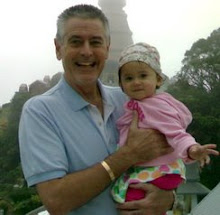
What is traditional Thai massage ?
The traditional Thai system, to the present day,is a holistic massage therapy that focuses on the body as a whole.
By recognizing the irreplaceable links of all the systems of the body, it aims to cure ailments by bringing all these various elements back into harmony with each other.
By removing blockages in the energy meridians, it promotes an increase in the energy levels of the patient. This soothing massage therapy also helps to settle the mind and remove stress from the body and mind of the patient.
The soft physical pressure and stretching techniques bring about pain relief, relieve muscular tension, and increase the flexibility of the muscles and limbs.
It also helps in harmonizing imbalances in the nervous system. Traditional Thai massage also improves blood and lymph circulation.
The holistic approach used ensures that the patient enters a state of deep relaxation and refreshes the spirit.

Where did it originate from ?
Traditional Thai massage has a very long history of well over 2,500 years.
It originated as a distillation of Indian Ayurvedic and traditional Chinese healing arts into a yoga-based method based on lines, points and remedies.
Traditional Thai massage systems of Ayurvedic medicine owes much of its early systemisation, preservation, and subsequent propagation to ascetic Buddhists and their monastic institution.
Throughout the ages, the practitioners of this medicine were Therevada Buddhist monks, practicing their healing at the monasteries.

How did it arrive in Thailand ?
As Thailand is located along the historical "Silk Road" trade route between India and China and as Buddhism spread out from India, through Thailand & into China this healing medicine spread along with it.
It found its way to Southeast-Asia where, for centuries, it was practiced by monks as one element of indigenous Thai medicine.
Thai people, believing illness results from an imbalance in the body, mind and spirit would then seek healing at their local temples.

How has it evolved over time?
The evolution of Thai massage is shrouded in the mystery of time caused by the destruction of written records during the Burmese invasion of the Siamese capital of Ayutthaya in 1767.
However,the influences of yoga, ayurvedic medicine, and traditional Chinese medicine is obvious, as the movements are based on the Asanas of yoga, and the attention to pressure points is similar to the Nadis of Ayurveda and the Meridians of Chinese medicine.
Buddhist monks and nuns would later integrate any beneficial medical system to the one brought from India.
The influences from China, India and other surrounding countries has played an important role in enriching the existing time-honored Thai massage system.
As a result of modernization and western influences, traditional Thai massage which earlier was practiced in Buddhist temples by monks and nuns is no longer limited to the temples and its vicinities.

What are the benefits of it?
Traditional Thai massage is beneficial for both young & old, active or inactive, healthy or not so healthy.
Traditional Thai massage has been used for countless generations to treat degenerative conditions and promote wellness.
However, each person will respond in terms of their own experience and present state of health.The benefits of traditional Thai massage include pain relief, reduced anxiety, depression, reduced blood pressure and heart rate.
Other benefits of traditional Thai massage include blocking pain signals to the brain (gate control theory), activating the parasympathetic nervous system to stimulate the release of endorphins and serotonin, preventing fibrosis or scar tissue, increasing the flow of lymph, and improving sleep but these benefits have not been supported by extensive clinical studies.
Traditional Thai massage builds upon the body's natural desire for complete health and a sense of ease and well-being.
A typical massage session lasts for about two hours. The massage is administered on mat or firm mattress kept on the floor.
The patient changes into his or her pajamas and lies down on this mat. The practitioner will then follow a pre-determined sequence of massage steps that involve the use of hands, elbows and feet.
The massage follows the flow of the energy meridians on the patients body. A number of techniques such as soft pressure, pulling fingers and toes, walking on the patients back and gentle stretching are used to free the blockages in these meridians.
Oil is normally not applied during the therapy session. At the end of the massage session, both the receiver and the therapist feel relaxed and energized.










































No comments:
Post a Comment
Many thanks for your comments & contributions, the best of which will feature on my website:
www.visit-chiang-mai-online.com
Regards
Kevin